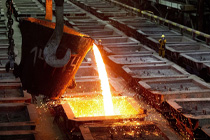Oct . 11, 2024 06:05 Back to list
Manufacturing Processes for Basic Refractory Materials in Industrial Facilities
Understanding Basic Refractory Material Factories
Refractory materials play a crucial role in various industries, particularly those that involve high-temperature processes. These materials are designed to withstand extreme temperatures and harsh environments, making them essential for applications in metallurgy, ceramics, and energy production. The production of basic refractory materials is a specialized field that combines advanced technology, skilled labor, and a deep understanding of material science. This article aims to explore the importance, types, production processes, and challenges faced by basic refractory material factories.
Importance of Basic Refractory Materials
Basic refractory materials are primarily composed of alkaline earth oxides, such as magnesia (MgO) and dolomite (CaMg(CO3)2). These materials are particularly valuable in the steelmaking industry, where they are used to line furnaces, ladles, and converters. Their high melting points and ability to resist chemical corrosion make them ideal for withstanding the violent reactions that occur during metal production.
The properties of these materials allow for improved efficiency and longevity of industrial equipment, leading to reduced downtime and operational costs. Additionally, the use of high-quality refractories contributes to better energy efficiency in industrial processes, enabling companies to minimize their environmental footprint.
Types of Basic Refractory Materials
The basic refractory materials can be broadly classified into two categories magnesia-based and dolomite-based refractories.
1. Magnesia-Based Refractories These are predominantly composed of MgO and are used in applications where resistance to high temperatures and basic slag is required. Magnesia refractories are essential in steelmaking and are often used in electric arc furnaces.
2. Dolomite-Based Refractories Dolomite refractories are made from a mixture of MgO and CaO. They are favored for their durability and lower cost. Dolomite-based materials are typically used in steel ladles and in the lining of furnaces that produce non-ferrous metals.
Production Process of Basic Refractory Materials
The production of basic refractory materials involves several key stages
basic refractory material factories

1. Raw Material Selection The first step is selecting high-quality raw materials. Obtaining high-purity magnesium oxide and dolomite is crucial to ensuring the refractory’s performance under extreme conditions.
2. Calcination The raw materials undergo calcination at high temperatures to remove carbon dioxide and other impurities. This step serves to enhance the purity and physical properties of the refractories.
3. Milling and Blending After calcination, the materials are finely milled and blended to achieve uniformity in particle size and composition. This stage is vital for achieving consistent performance in the final product.
4. Forming The blended materials are then shaped into required forms using pressing, casting, or extrusion techniques. The forming process must be carefully controlled to ensure that the final shapes meet the specifications for their intended applications.
5. Sintering The formed refractory products are sintered in high-temperature kilns. This heat treatment process is essential for developing the final mechanical properties and phase transformations necessary for performance.
6. Quality Control Throughout the production process, rigorous quality control measures are applied to ensure that the materials meet industry standards and customer specifications.
Challenges Faced by Basic Refractory Material Factories
Despite the critical role of basic refractory materials, factories face numerous challenges. The volatile raw material prices can significantly impact production costs. Additionally, strict environmental regulations concerning emissions and waste management necessitate investment in cleaner technologies. Furthermore, the industry must address the ongoing demand for innovative refractory solutions that can withstand even higher temperatures and more aggressive chemical environments.
Conclusion
Basic refractory material factories are pivotal in supporting industries that rely on high-temperature processes. Through careful selection of materials, advanced production techniques, and stringent quality control, these factories provide essential products that enhance operational efficiency and sustainability in various sectors. Understanding the dynamics of this industry not only highlights its significance but also underscores the importance of ongoing innovation to meet the evolving needs of a demanding market.
-
Eco-Friendly Granule Covering Agent | Dust & Caking Control
NewsAug.06,2025
-
Fe-C Composite Pellets for BOF: High-Efficiency & Cost-Saving
NewsAug.05,2025
-
Premium Tundish Covering Agents Exporters | High Purity
NewsAug.04,2025
-
Fe-C Composite Pellets for BOF | Efficient & Economical
NewsAug.03,2025
-
Top Tundish Covering Agent Exporters | Premium Quality Solutions
NewsAug.02,2025
-
First Bauxite Exporters | AI-Optimized Supply
NewsAug.01,2025
